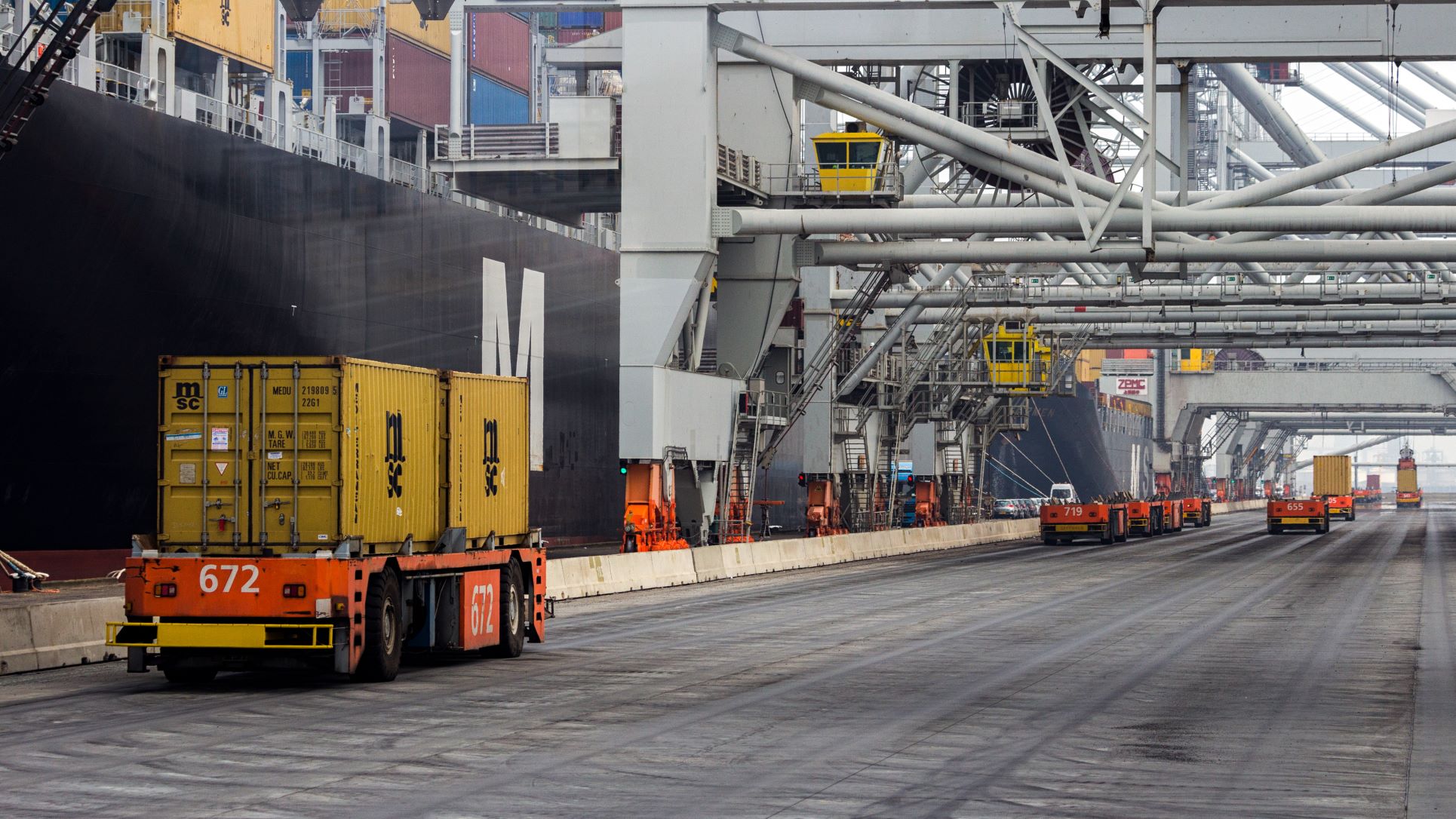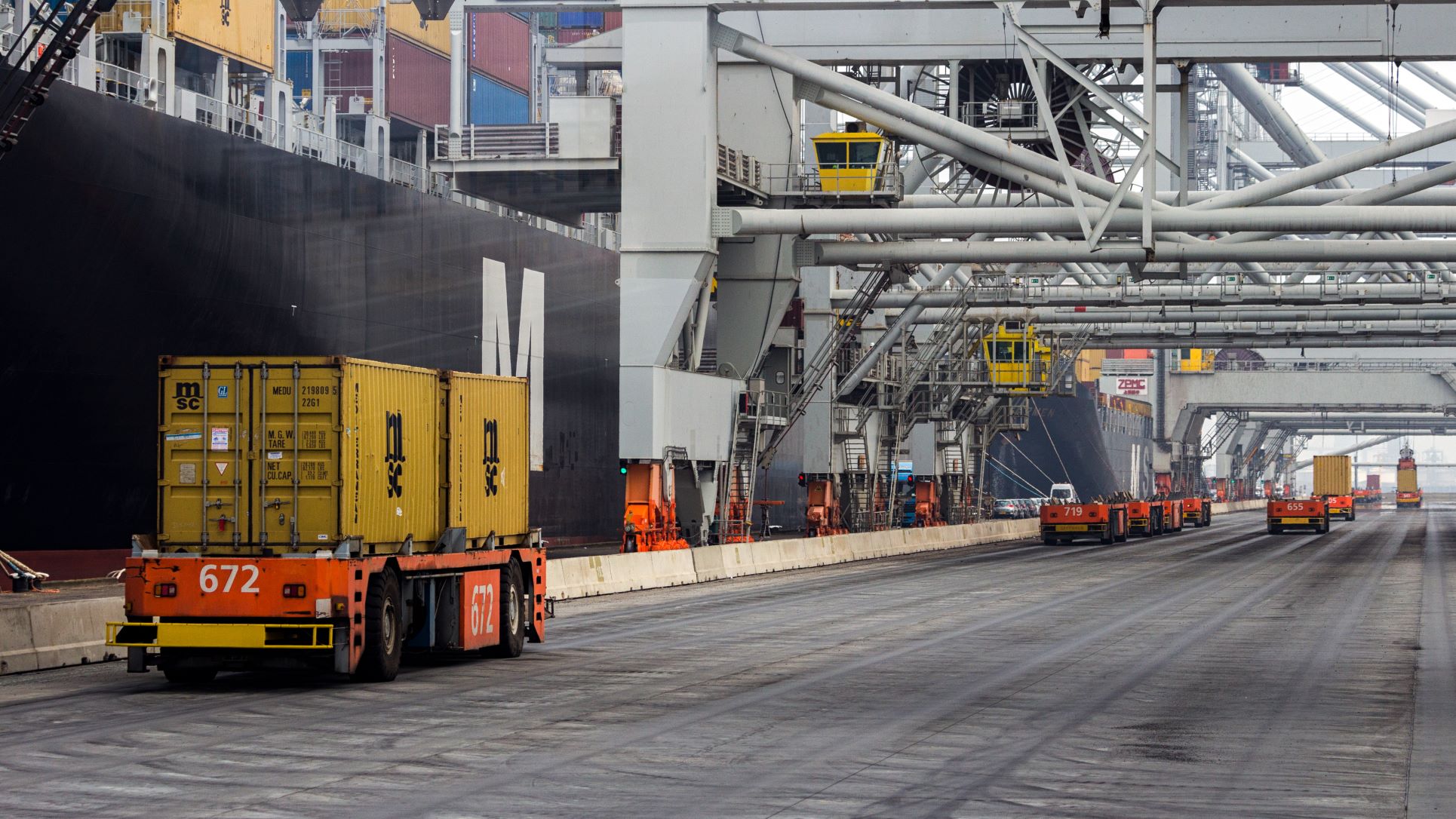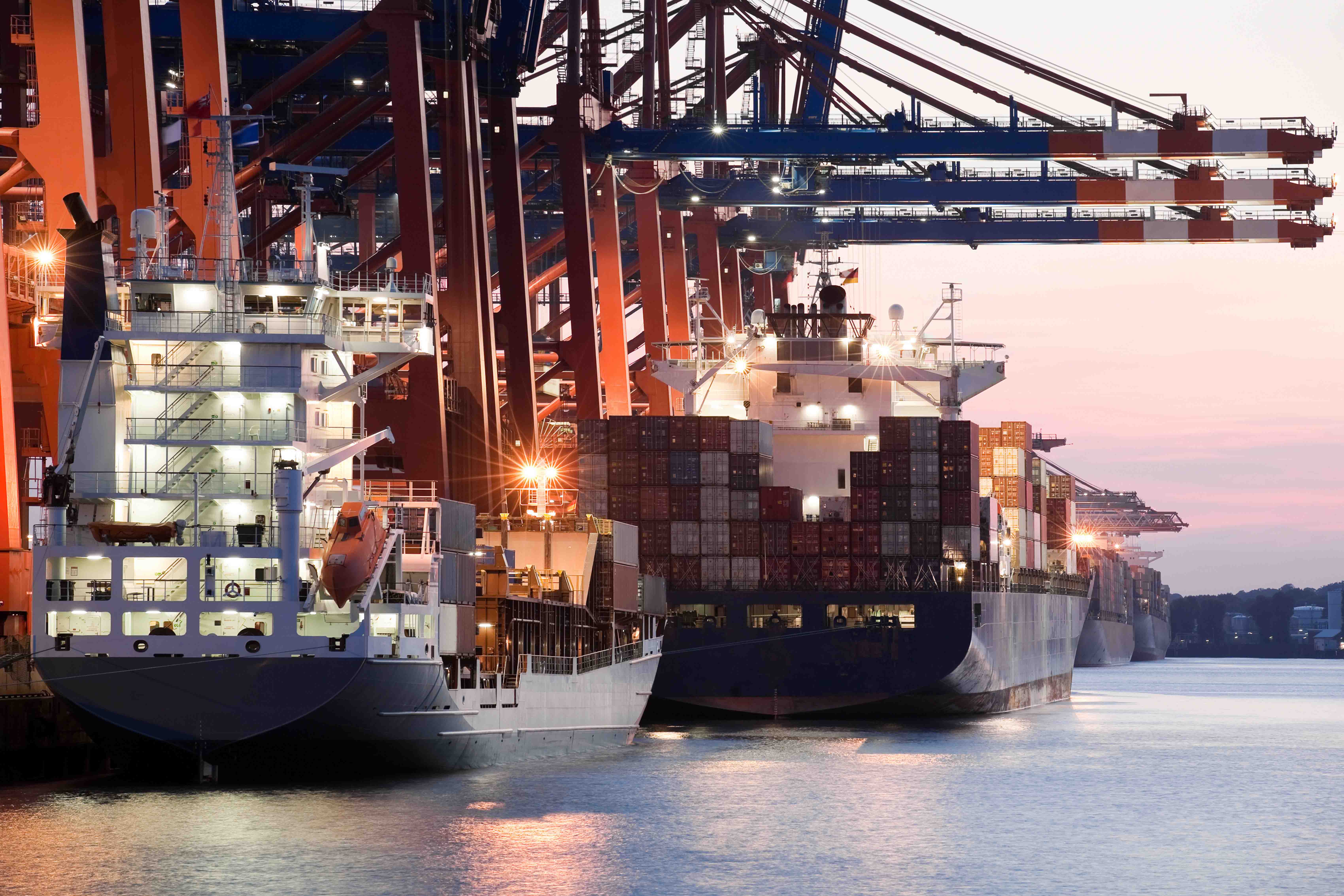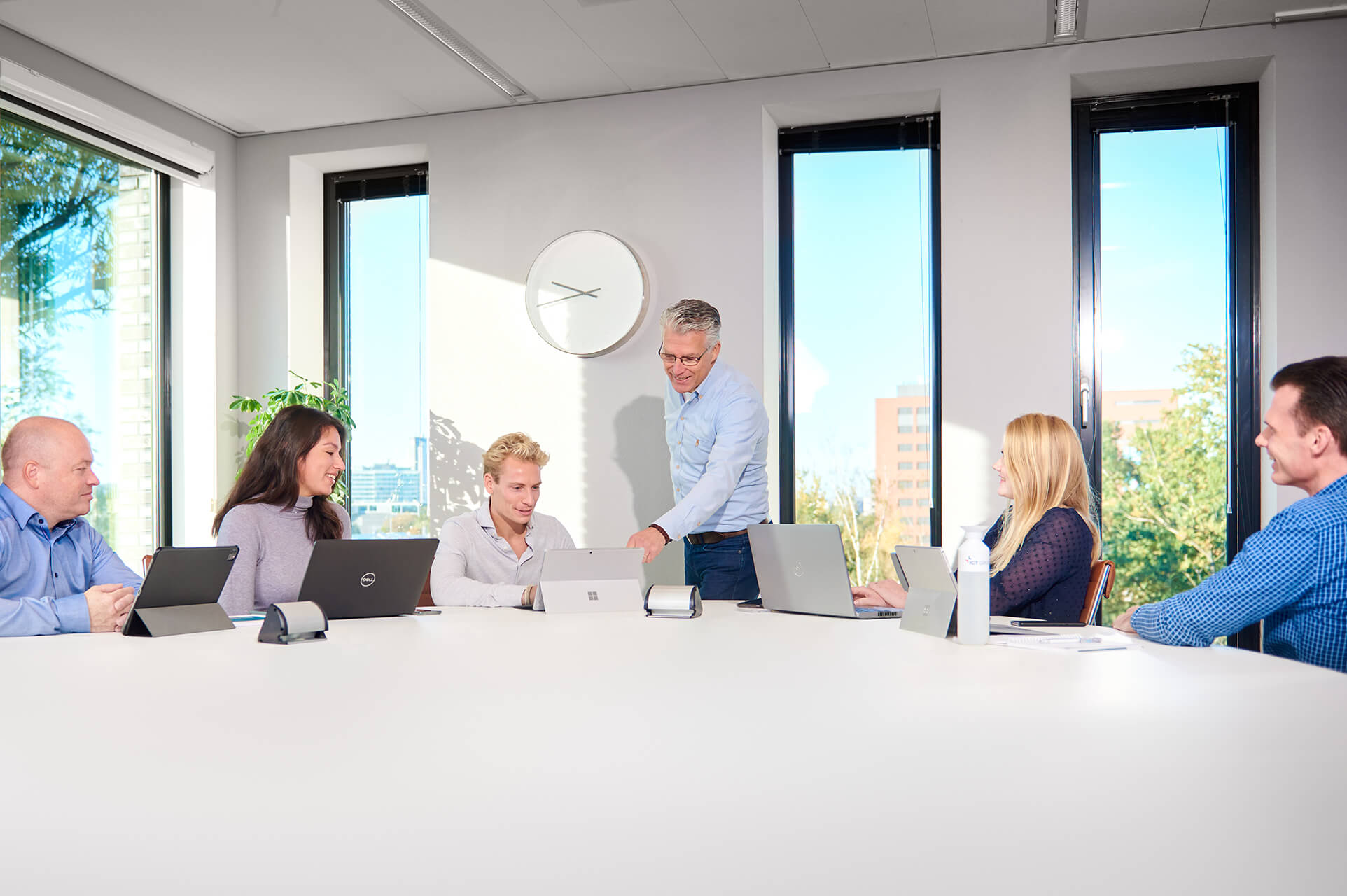
Because the AGVs are used in a limited area, traffic often crosses, frequently leading to unwanted stops. This has a serious impact on the traffic flow, planning and fuel consumption. Gert-Jan van der Wielen, technical consultant at ICT Netherlands, has succeeded in reducing the average number of unplanned stops by AGVs (AGV obstacles) per hour by no less than 76%.
The improvement project was a result of the Lean Six Sigma Green Belt training programme that Gert-Jan followed and that was paid for by ICT. He learned to use a method for optimising business processes
by identifying, analysing and reducing problems in processes. In order to complete his training programme, he needed to carry out a practical assignment. Gert-Jan: “It often happened that a number of AGVs had
to wait for each other for a long time, sometimes even in deadlock. Traffic was delayed even more frequently because it had to slow down or (almost) stop to let other AGVs pass. The higher the traffic intensity and the longer the route, the more frequently problems occurred. In some cases waterside control had to intervene to resolve an AGV traffic jam. Reducing the AGV traffic congestion is an important step in allowing AGVs to arrive at their destination on time more frequently during peak traffic periods, and in making the system more predictable.”
“Analysing data is very important work, as it creates the baseline for improvements.”
Gert-Jan van der Wielen, Technical Consultant at ICT Netherlands

Cause and effect
When he composed the project team, Gert-Jan selected people with operational knowhow of the AGV process: a technical specialist in the domain of AGVs, two members from the waterside control team and the project manager of the AGV improvement programme. As a team they collected the required input using the DMAIC method. DMAIC stands for Define, Measure, Analyse, Improve and Control, the five phases of this method. After a baseline measurement, which gave Gert-Jan a good idea of the number and locations of unplanned stops by AGVs, he set himself the target of reducing the average number of hourly obstacles by 50%. He then performed an intensive analysis so he could map out the root causes of the AGV obstacles. He compared a range of parameters such as the predicted claim, start and driving behaviour of the various types of AGVs with the operational behaviour and recorded the differences in issue reports, the so-called tickets. As a next step, he worked together with the project manager of the AGV improvement programme
to prioritise the tickets. This revealed that the required adjustments mainly involved changes to the software which would result in improved predictions of the future AGV position and claims. And this is precisely the expertise of ICT Netherlands!
From 78 to 18 obstacles
In order to resolve the software issues Gert-Jan called in the assistance of his colleagues at ICT Netherlands. They took care of the programming work while Gert-Jan focussed on testing the solutions. As a team they were able to implement a total of 28 improvements in a number of Scrum Sprints. As a first step in the process, the AGV clone, which simulates the operational AGV behaviour in the test environment, was
aligned with the actual, operational AGV behaviour. The next step consisted of improving the prediction of the AGV position, and harmonising the AGV claiming and the AGV claim prediction as much as possible. The improvements were stored and documented in JIRA, a software package used by ICT Netherlands to manage all issues regarding the planning and control software at the terminal in question. The small
improvements have resulted in a reduction of the average number of AGV obstacles from 78 to 18, while the standard deviation decreased from 48 to 14 obstacles per hour. In monetary terms, the improved AGV traffic flow at the terminal results in annual savings of € 268,000 in fuel costs and € 28,000 in quay crane man-hours.
Not done yet
A reduction of no less than 76% is a fantastic result, but Gert-Jan is convinced that more improvements are possible. “I expect that addressing the remaining tickets will lead to a further reduction in AGV obstacles. For instance, late arrivals of AGV’s can be further reduced and the system can be made even more predictable. I am proud of my achievement for my client.”
Wil je werken in de technische automatisering?
Lees meer over ons werk binnen het Transport en Logistiek domein en solliciteer nu!
Bekijk de mogelijkheden


